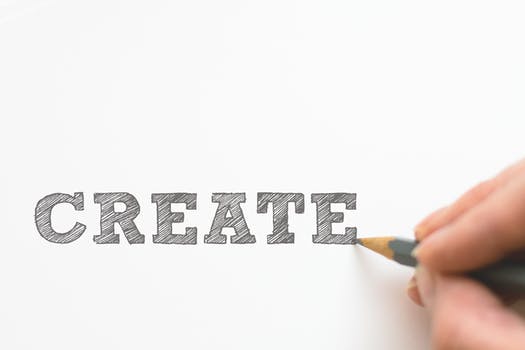TheDeveloperBlog.com
C-Sharp | Java | Python | Swift | GO | WPF | Ruby | Scala | F# | JavaScript | SQL | PHP | Angular | HTML
OpenCV Mouse Event
OpenCV Mouse Event with What is OpenCV, History, Installation, Reading Images, Writing Images, Resize Image, Image Rotation, Gaussian Blur, Blob Detection, Face Detection and Face Recognition etc.
OpenCV Mouse EventMouse as a Paint Brush
OpenCV provides a facility to use the mouse as a paint brush or a drawing tool. Whenever any mouse event occurs on the window screen, it can draw anything. Mouse events can be left-button down, left-button up, double-click, etc. It gives us the coordinates (x,y) for every mouse event. By using these coordinates, we can draw whatever we want. To get the list of all available events, run the following code in the terminal: import cv2 mouse_events = [j for j in dir(cv2) if 'EVENT' in j] print(mouse_events) Above code will return a list of all mouse events that are supported by OpenCV. Output: ['EVENT_FLAG_ALTKEY', 'EVENT_FLAG_CTRLKEY', 'EVENT_FLAG_LBUTTON', 'EVENT_FLAG_MBUTTON', 'EVENT_FLAG_RBUTTON', 'EVENT_FLAG_SHIFTKEY', 'EVENT_LBUTTONDBLCLK', 'EVENT_LBUTTONDOWN', 'EVENT_LBUTTONUP', 'EVENT_MBUTTONDBLCLK', 'EVENT_MBUTTONDOWN', 'EVENT_MBUTTONUP', 'EVENT_MOUSEHWHEEL', 'EVENT_MOUSEMOVE', 'EVENT_MOUSEWHEEL', 'EVENT_RBUTTONDBLCLK', 'EVENT_RBUTTONDOWN', 'EVENT_RBUTTONUP'] Draw Circle
To draw a circle on the window screen, we first need to create a mouse callback function by using the cv2.setMouseCallback() function. It has a specific format that remains same everywhere. Our mouse callback function is facilitated by drawing a circle using double-click. Consider the following program:
import cv2
import numpy as np
# Creating mouse callback function
def draw_circle(event,x,y,flags,param):
if(event == cv2.EVENT_LBUTTONDBLCLK):
cv2.circle(img,(x,y),100,(255,255, 0),-1)
# Creating a black image, a window and bind the function to window
img = np.zeros((512,512,3), np.uint8)
cv2.namedWindow('image')
cv2.setMouseCallback('image',draw_circle)
while(1):
cv2.imshow('image',img)
if cv2.waitKey(20) & 0xFF == 27:
break
cv2.destroyAllWindows()

In the above code, we first created a black window screen where the mouse event has occurred. When we double-click on the black window, it will draw a circle as we defined in the callback draw_circle() function. Draw Rectangle and CurveWe can draw any shape on the window screen. We draw either rectangles or circles (depending on the model we select) by dragging the mouse as we do in Paint application. We consider the example where we created a callback function that has two parts. The first part is to draw the rectangle and another part to draw the circles. Let see the given example to understand it in more specific way:
import cv2
import numpy as np
draw = False # true if the mouse is pressed. Press m to shift into curve mode.
mode = True # if True, draw rectangle.
a,b = -1,-1
# mouse callback function
def draw_circle(event,x,y,flags,param):
global a,b,draw,mode
if(event == cv2.EVENT_LBUTTONDOWN):
draw = True
a,b = x,y
elif (event == cv2.EVENT_MOUSEMOVE):
if draw == True:
if mode == True:
cv2.rectangle(img,(a,b),(x,y),(0,255,0),-1)
else:
cv2.circle(img,(x,y),5,(0,0,255),-1)
elif(event == cv2.EVENT_LBUTTONUP):
draw = False
if mode == True:
cv2.rectangle(img,(a,b),(x,y),(0,255,0),-1)
else:
cv2.circle(img,(x,y),5,(0,0,255),-1)
# We bind the keyboard key m to toggle between rectangle and circle.
img = np.zeros((512,512,3), np.uint8)
cv2.namedWindow('image')
cv2.setMouseCallback('image',draw_circle)
while(1):
cv2.imshow('image',img)
k = cv2.waitKey(1) & 0xFF
if k == ord('m'):
mode = not mode
elif(k == 27):
break
cv2.destroyAllWindows()
Output 
In the above program, we have created two mouse callback functions. It is bound with the OpenCV window. In the while loop, we set a keyboard binding for key 'm' to shift between rectangle and curve.
Next TopicOpenCV Template Matching
|
Related Links:
- OpenCV Blob Detection
- OpenCV Blur
- OpenCV Image Filters
- OpenCV Image Threshold
- OpenCV Contours
- OpenCV Mouse Event
- OpenCV Tutorial | OpenCV using Python
- OpenCV Template Matching
- OpenCV Erosion and Dilation
- OpenCV Video Capture
- OpenCV Image Rotation
- OpenCV Drawing Functions
- OpenCV Installation
- OpenCV Read and Save Images
- OpenCV Basic Operation On images
- OpenCV Resize Image
- OpenCV Canny Edge Detection
- OpenCV Limitations in Face Detection

